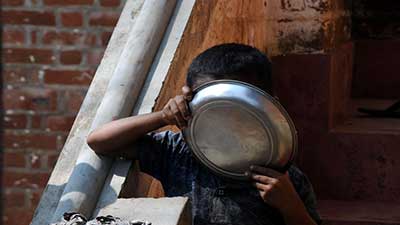Date: 28/12/2022
Relevance: GS-2: Statutory, Regulatory, and various Quasi-judicial Bodies.
Key Phrases: National Commission for Protection of Child Rights (NCPCR), civil society organizations, fundraising activities, Eight Quick Steps to Ethical Imagery, Informed consent, awareness raising.
Why in News?
- The practice of civil society organizations using representative visuals for fundraising activities concerning development issues such as malnutrition now faces new scrutiny with the National Commission for Protection of Child Rights (NCPCR) issuing a directive to NGOs to not depict vulnerable children.
National Commission for Protection of Child Rights (NCPCR)
- NCPCR is a statutory body constituted under Section 3 of the Commission for Protection of Child Rights (CPCR) Act, 2005 to protect child rights and other related matters in the Country.
- It works under the Ministry of Women & Child Development.
- The Commission is further mandated to monitor the proper and effective
implementation of:
- the Protection of Children from Sexual Offences (POCSO) Act, 2012
- Juvenile Justice (Care and Protection of Children) Act, 2015
- Right to Free and Compulsory Education (RTE) Act, 2009
- In one of the functions laid down under Section 13 of the CPCR Act, 2005, the Commission has been assigned the function to examine and review the safeguards provided by or under any law for the time being in force for the protection of child rights and recommend measures for their effective implementation.
- The Commission also has the powers of the Civil Court to try a suit under Section 14 of the CPCR Act, 2005, and the Code of Civil Procedure, 1908.
What is the issue:
- A Member of Parliament (MP) has raised concern that various non-governmental organizations are seen raising funding, domestic as well as international for their NGOs through advertisements on print media, news channels, websites, social media, and radio while showing vulnerable minor children in deplorable conditions.
Ethical dilemma:
- One frame—arising from fundraising practice—argues that charities ought to use images and stories of service users that raise the most money to deliver the services that will help them (“Fundraising Frame”).
- The other argues that charities ought to use stories and images that are not stereotypical, do not “other” service users, and do not represent them in an undignified manner, as this representation causes long-term damage both to those depicted and children like them, and that this ought to be used in place of the Fundraising Frame (“Values Frame”).
NCPCR’s directive:
- The NCPCR wrote to NGOs across the country on the practice of “raising funding, domestic as well as international, for their NGOs through advertisement while showing vulnerable minor children in deplorable conditions”.
- The letter asked NGOs to refrain from such depiction as it amounted to a violation of the Juvenile Justice Act, 2015.
- Some NGOs in their campaign to tackle malnutrition in tribal children by raising money from the general public are found misleading on the ground that the issue of malnutrition was being “vigorously pursued” by the government through its Saksham Anganwadi and Poshan 2.0 scheme.
- It also asked States to “report” similar incidents involving NGOs, take “appropriate measures to expose the false information” and “alert beneficiaries about false claims made by them”.
What needs to be done:
- Objectification:
- Efforts should be made to ensure it doesn’t objectify, belittle or dehumanize children.
- Informed consent:
- Informed consent of the subject or their family is obtained for photos and it is ensured that they understand the use to which their images may be put as well as the possible consequences.
- Rigorous procedures:
- Rigorous procedures should be undertaken to minimize any risk to the children, and no more than two of the following pieces of information should be given out: a child’s full name, image, and location.
- UNICEF’s Guidelines:
- The UNICEF’s “Eight Quick Steps to Ethical Imagery” suggests asking the question — “If she/he were my child, how would I want her/him portrayed?”
- It also warns against the other extreme of using happy and cute images of children as they “tend to objectify children into an idealized and sentimentalized happiness that negates the complexity of their real life”.
- Reframing fundraising discourse:
- Change the fundraising campaign into something else: awareness raising, engagement, and education— “images should serve not only to raise funds but should also creatively link public education to fundraising”.
- Change required in donor’s mentality:
- There is also a need for a mind shift as the donor community appears to need or respond to evocative pictures in fund-raising.
Conclusion:
- In the 21st-century images have become a very powerful tool for grabbing the attention of the public and people in general.
- Making good use of images is a sensitive issue that all civil society organizations need to address while considering ethical dimensions.
- Fundraising is ethical when it balances the duty of fundraisers to ask for support (on behalf of their beneficiaries), with the relevant rights of donors, such that a mutually beneficial outcome is achieved and neither stakeholder is significantly harmed.
Source: The Hindu
Mains Question:
Q. What are the powers and functions of the National Commission for Protection of Child Rights (NCPCR)? Discuss.






















